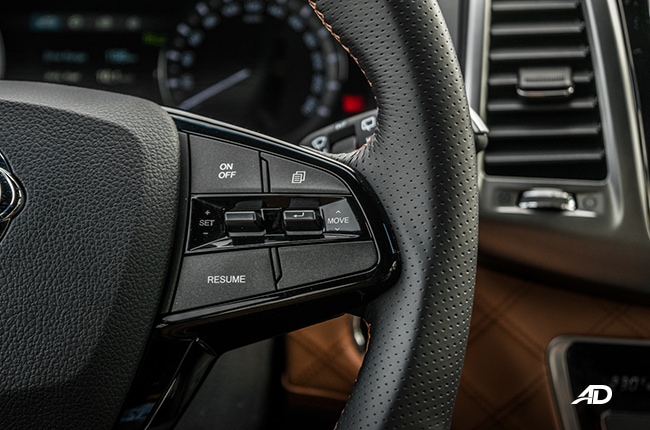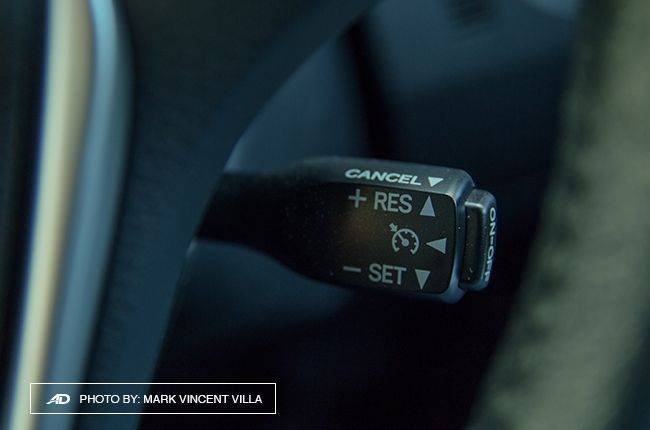
While cruise control has been a long-standing must for those who frequent the highway, adaptive cruise control is a godsend of a feature that allows users the convenience of relaxing even more than they normally would with the standard cruise control feature.
A certain level of autonomy is granted to a car with this technology. In many cases, the vehicle will need extra hardware in order to have this feature on board.
How does it work?

Cruise control involves a set of buttons that links directly to the throttle controller of the engine. In the past, it was a servo motor that opened and closed the throttle body to maintain or gain speed as needed. Nowadays, these buttons are linked directly to the ECU and allow the car to regulate its speed through the electronic throttle body controller found in modern cars.
Adaptive cruise control works and is activated the same way as normal cruise control. The driver has to get up to a certain speed first or set and allow the computer to accelerate on its own. The difference, however, is that it uses a set of radars and sensors that allow the car to detect objects, such as other cars in front of it. Modern systems also include a forward collision warning along with active lane keep assist that further prevent accidents happening on the highway.
How do you use it?
An array of buttons usually mark the presence of cruise control. These buttons can be found in either the steering wheel or in the indicator stalks, depending on the car. Activating this feature usually involves pressing two or three buttons depending on the execution. A button is used to turn on the cruise control, while another is used to set it. For adaptive functionality, you may need to press another button before or after your cruising speed is set. It all depends on the manufacturer’s control scheme.
Once on, you can use it like any other cruise system. It activates with the press of a few buttons and it is overridden the moment the brake pedal is depressed. It is important to note that this system is not an autonomous driving technology. It can still be overridden with the driver’s input; however, it should not be left alone. The driver still needs to treat this technology as a layer of protection and not as a way to get around on the highway.
Do you need it?
In many cases, most people do not need adaptive cruise control in the Philippines. For the most part, especially in Metro Manila, Filipinos will find themselves caught in traffic more often than being on the highway. In this case, the vehicle cannot stretch its legs enough in order to utilize adaptive cruise control fully. Some adaptive cruise controls, however, are geared towards city driving. These systems use the same radar array that lets the vehicle crawl and stop and go traffic.
For those of us that frequent the highway and travel long distances, however, this feature is going to be very helpful in order to keep occupants and fellow motorists safe from sudden instances of inattentiveness. If you don’t find yourself on the highway too often, then it shouldn’t matter too much if you can’t find it on the spec sheet. It should matter if the system can be used in stop and go traffic as well, but you really should pay attention to the road instead of leaving it all to a system. It’s more of an extra layer of protection against your inattentiveness.
Latest Features
-
An all-electric future: The Porsche Macan Electric / Featured Article
Porsche’s Macan goes all-electric; it’s a new beast with an electrified heart, yet unmistakably Porsche in performance and spirit.
-
Which Kia should I buy? / Featured Article
We’re here to help you decide which Kia vehicle is best for you, whether it’s a sedan, crossover, or minivan.
-
Why Lynk & Co is a good option for luxury car buyers / Featured Article
Lynk & Co offers premium value for those exploring the luxury market.
Popular Articles
-
Electric Vehicles in the Philippines for under P1 million
Jerome Tresvalles · Aug 19, 2025
-
Top 3 Cars For Every Lifestyle—What Cars Are Right For You? | Behind a Desk
Caco Tirona · Apr 24, 2024
-
5 Tips to Maximize Fuel Efficiency
Jerome Tresvalles · Sep 09, 2024
-
Five driving habits that are draining your fuel tank
Jerome Tresvalles · Jun 24, 2025
-
Can engine braking harm your engine?
Jerome Tresvalles · Sep 11, 2025
-
Do electric cars even need maintenance?
Jerome Tresvalles · Oct 23, 2024
-
Best vehicles for an active outdoor lifestyle
Shaynah Miranda · Jul 25, 2024
-
How to drive different types of vehicle transmissions
May 23, 2024
-
5 easy ways to keep your car interior clean
Allysa Mae Zulueta · Nov 15, 2021
-
How to survive Metro Manila traffic
Earl Lee · Aug 16, 2022







